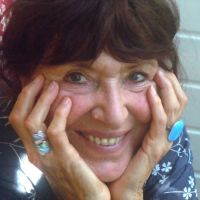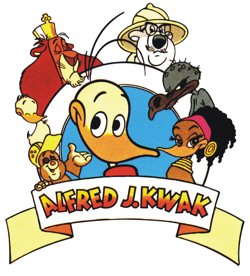Annet Kossen: Difference between revisions
| Line 21: | Line 21: | ||
==History== | ==History== | ||
===New York=== | ===New York=== | ||
Kossen | Kossen developed a passion for drawing from a young age. After completing [https://nl.wikipedia.org/wiki/Meer_uitgebreid_lager_onderwijs mulo], she enrolled at [https://nl.wikipedia.org/wiki/Schoevers Schoevers], studying office management and secretarial tasks—fields she disliked but pursued at her parents' insistence to learn a trade. She lived in Alkmaar until age 19 before relocating to [[wikipedia:Amsterdam|Amsterdam]]. This education allowed her to secure work at [[Carré]] and [https://nl.wikipedia.org/wiki/Em._Querido%27s_Uitgeverij Uitgeverij Querido]. | ||
In 1964 she moved to [[wikipedia:New York|New York]] | In 1964, she moved to [[wikipedia:New York|New York]] and managed the work of prominent young American illustrators, leading a successful company. During her time in [[Wikipedia:United States|America]], she also briefly attended the [[Wikipedia:School of Visual Arts|School of Visual Arts]], where she focused on painting. During this period, she received her first illustration commission, creating black-and-white illustrations for a cookbook for a publisher friend in New York. She later contributed several illustrations to the magazine [[wikipedia:Puffin Books|Puffin Post]].<ref name="Lexicon" /><ref name="Lambiek" /> | ||
In 1973, she returned to Amsterdam with writer [[Rob Chrispijn]], whom she married. She used her professional illustrations from America, along with other work, to create a portfolio for publishers. In 1977, publisher [https://nl.wikipedia.org/wiki/Lemniscaat_(uitgeverij) Lemniscaat] commissioned her to illustrate a picture book called ''Repelsteeltje'' ([[wikipedia:Rumpelstiltskin|Rumpelstiltskin]]).<ref name="Lexicon" /> | |||
===Alfred J. Kwak=== | ===Alfred J. Kwak=== | ||
Around this time, Kossen met [[Herman van Veen]] through her husband, Rob Chrispijn, who writes song lyrics, takes photographs, and manages lighting for van Veen’s productions. Van Veen, impressed by Kossen's illustrations, expressed interest in creating a picture book with her and asked her to find a suitable story as a foundation. Kossen reported struggling with [[wikipedia:imposter syndrom]] during this period, as she had not formally trained in illustration and was [[wikipedia:Autodidacticism|self-taught]]. | |||
Kossen found inspiration in an old fairy tale, ''[[Drakestail]]'', from ''The Red Fairy Book'', written by [[wikipedia | |||
Lang|Andrew Lang]] in 1890. Lang adapted this story from the French tale, ''Bout-d'-Canard'' (literally "Duck Butt"), by Charles Marelle, published in 1888. She translated this story into Dutch for van Veen, who contributed some verses. | |||
Before | Before beginning a picture book, van Veen incorporated the story into a small stage play, created as a birthday gift for a friend of a [[Harlekijn Holland]] employee in 1976. Shortly after, in 1977, the director of the [[Residentie Orkest]] asked van Veen to develop a children’s musical production, prompting him to further adapt the story into a play, which premiered in February 1978. | ||
Kossen’s illustrations were featured on the vinyl cover of the [[Alfred J. Kwak theater play]], and following the play's success, a [[Alfred Jodocus Kwak boek|story book]] was published in 1979, with a revised edition in 1987.<ref name="Lexicon" /><ref name="HvV" /> | |||
Kossen | Kossen later expressed frustration over this period, feeling resentment toward Herman van Veen for appropriating Alfred Jodocus Kwak. Although she had no contractual agreement on ownership, she lamented missing out on shares of the profits generated by Alfred’s success. Illustrators [[Harald Siepermann]] and [[Hans Bacher]] were assigned to be the new illustrator for Kwak and <ref name="VanVeenPers" /> | ||
===Egel en Muis=== | |||
==Works== | ==Works== | ||
Revision as of 14:51, 8 November 2024
| Annet Kossen | |
|---|---|
 | |
| Annet Kossen's youtube profile picture | |
| Full name | Annet Kossen |
| Born | May 28, 1938 |
| Died | October 20, 2024 (aged 86) |
| Birthplace | wikipedia:Alkmaar, The Netherlands |
| Occupation | Wikipedia:Illustrator |
| Years active | 1964-???? |
Annet Kossen (May 28, 1938 - October 20, 2024) was a painter and an illustrator. Born in Alkmaar. She was the illustrator to bring the originally French fairytale, Drakestail, to Herman van Veen's attention, which was the start of everything Alfred Jodocus Kwak.
History
New York
Kossen developed a passion for drawing from a young age. After completing mulo, she enrolled at Schoevers, studying office management and secretarial tasks—fields she disliked but pursued at her parents' insistence to learn a trade. She lived in Alkmaar until age 19 before relocating to Amsterdam. This education allowed her to secure work at Carré and Uitgeverij Querido.
In 1964, she moved to New York and managed the work of prominent young American illustrators, leading a successful company. During her time in America, she also briefly attended the School of Visual Arts, where she focused on painting. During this period, she received her first illustration commission, creating black-and-white illustrations for a cookbook for a publisher friend in New York. She later contributed several illustrations to the magazine Puffin Post.[1][2]
In 1973, she returned to Amsterdam with writer Rob Chrispijn, whom she married. She used her professional illustrations from America, along with other work, to create a portfolio for publishers. In 1977, publisher Lemniscaat commissioned her to illustrate a picture book called Repelsteeltje (Rumpelstiltskin).[1]
Alfred J. Kwak
Around this time, Kossen met Herman van Veen through her husband, Rob Chrispijn, who writes song lyrics, takes photographs, and manages lighting for van Veen’s productions. Van Veen, impressed by Kossen's illustrations, expressed interest in creating a picture book with her and asked her to find a suitable story as a foundation. Kossen reported struggling with wikipedia:imposter syndrom during this period, as she had not formally trained in illustration and was self-taught.
Kossen found inspiration in an old fairy tale, Drakestail, from The Red Fairy Book, written by [[wikipedia Lang|Andrew Lang]] in 1890. Lang adapted this story from the French tale, Bout-d'-Canard (literally "Duck Butt"), by Charles Marelle, published in 1888. She translated this story into Dutch for van Veen, who contributed some verses.
Before beginning a picture book, van Veen incorporated the story into a small stage play, created as a birthday gift for a friend of a Harlekijn Holland employee in 1976. Shortly after, in 1977, the director of the Residentie Orkest asked van Veen to develop a children’s musical production, prompting him to further adapt the story into a play, which premiered in February 1978.
Kossen’s illustrations were featured on the vinyl cover of the Alfred J. Kwak theater play, and following the play's success, a story book was published in 1979, with a revised edition in 1987.[1][3]
Kossen later expressed frustration over this period, feeling resentment toward Herman van Veen for appropriating Alfred Jodocus Kwak. Although she had no contractual agreement on ownership, she lamented missing out on shares of the profits generated by Alfred’s success. Illustrators Harald Siepermann and Hans Bacher were assigned to be the new illustrator for Kwak and [4]
Egel en Muis
Works
This list is incomplete.
Illustrator
Notes
References
- ↑ 1.0 1.1 1.2 van den Heuvel, Julienne (2006). Lexicon van de jeugdliteratuur: Annet Kossen. Antwerpen, Belgium: Garant.
- ↑ Uknown (22 July 2013). "Annet Kossen page on lambiek.net". lambiek.net.
- ↑ Schra, Emile (2015). Herman van Veen. Amsterdam, The Netherlands: Nieuw Amsterdam. ISBN 9789046818947. Page 238
- ↑ Visser, Jacqueline (9 September 1994). "De ingekaderde vrijheid van de striptekenaar". Nieuw Kamper Dagblad (in Nederlands). Kampen, the Netherlands. Retrieved 8 November 2024.
Cite error: <ref> tag with name "Vledderveen" defined in <references> is not used in prior text.
